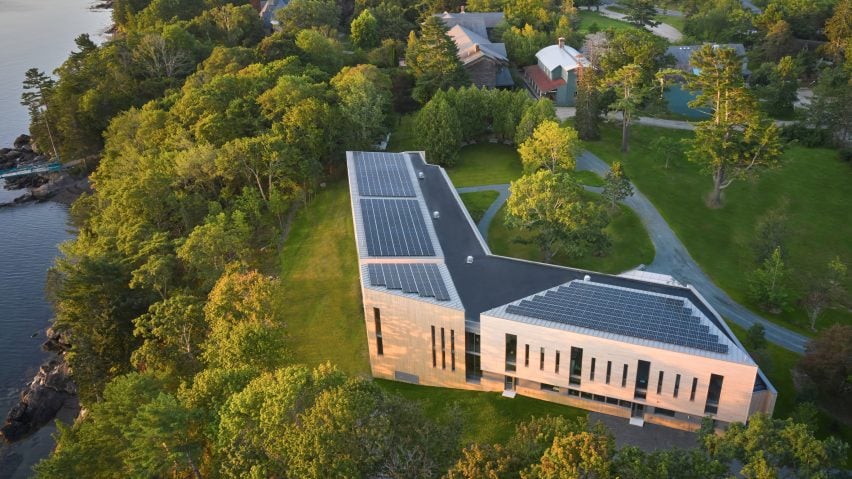
Ecology centre in coastal Maine is "model of holistic sustainability"
US studio Susan T Rodriguez Architecture & Design has incorporated local materials and energy-saving features into a Maine building that is meant to be "a new benchmark for academic buildings in northern climates".
Located in the town of Bar Harbor, the Davis Center for Human Ecology is located on the main, 38-acre (15-hectare) campus of the College of the Atlantic (COA).
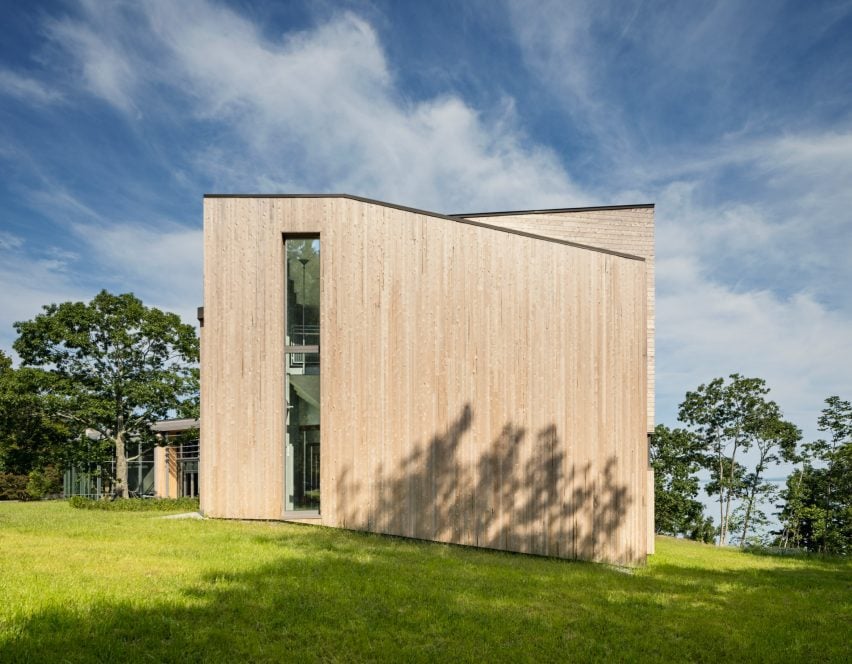
Founded in 1969, COA is a small private college dedicated to exploring the relationships between humans and their environments.
The centre is the first purpose-built, academic facility to be constructed on campus since the college was established.
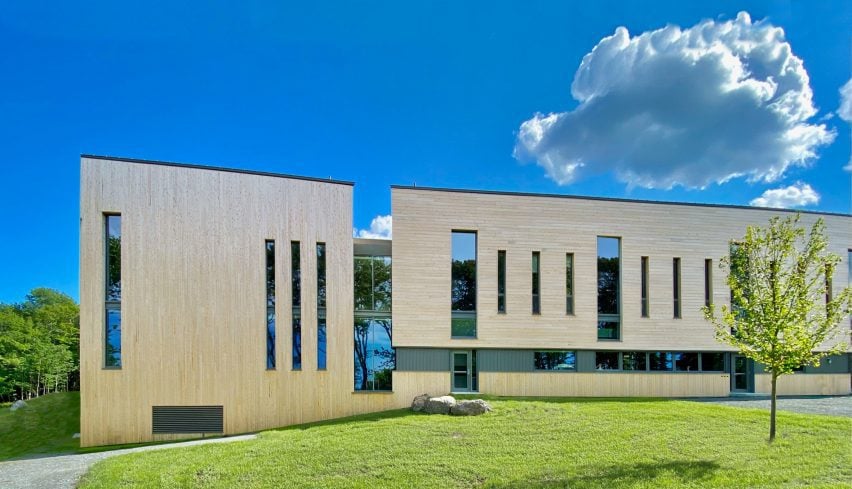
The building's design – by New York's Susan T Rodriguez Architecture & Design – was informed by COA's focus on interdisciplinary and hands-on learning, alongside its commitment to environmental stewardship.
"In every aspect of its design, the building responds to COA's ambitious goals for sustainability, from macro issues of siting, massing and systems' design to micro issues of material selection and detailing," the architectural studio said.
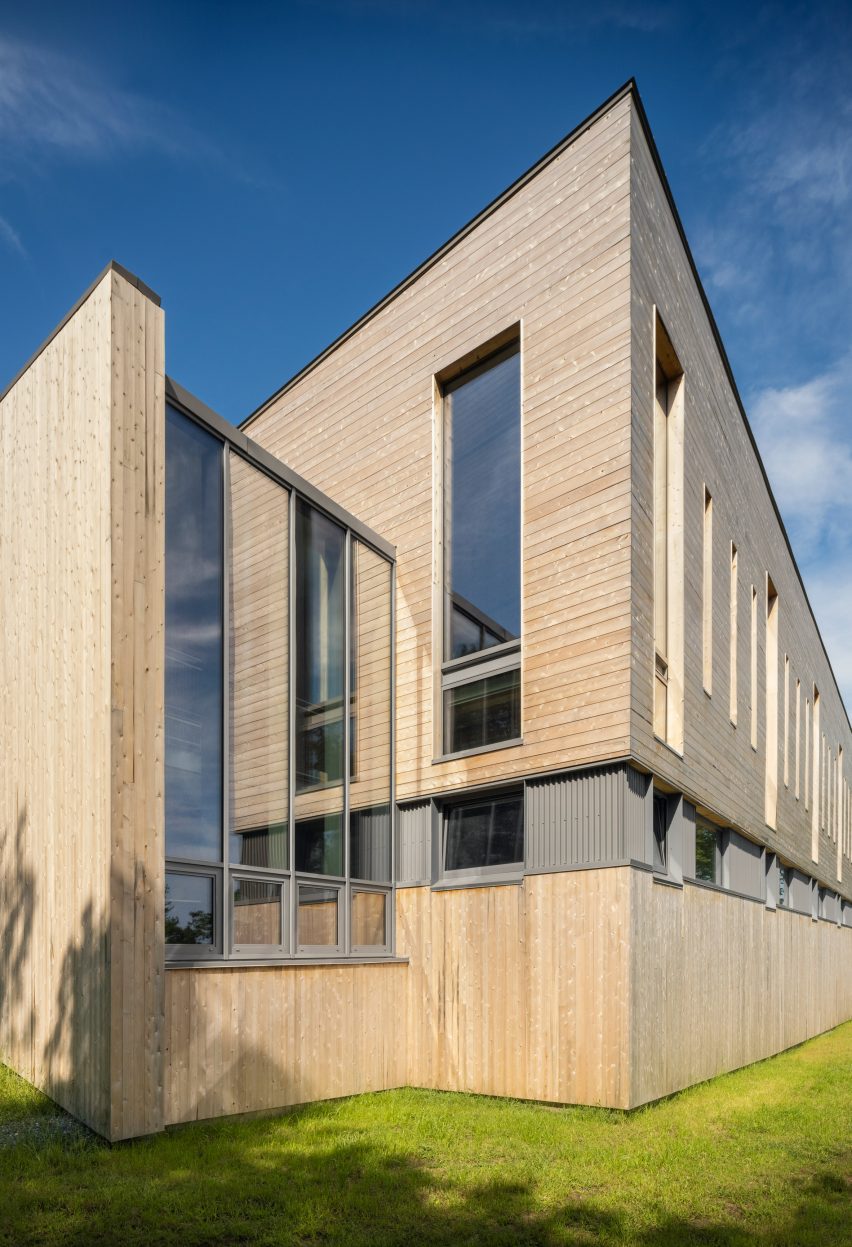
"The design is a prism for amplifying the relationships between humans and their built, social and natural environments," the studio added.
Situated on a promontory overlooking Frenchman Bay, the centre is positioned to block harsh ocean winds while framing a new campus landscape.
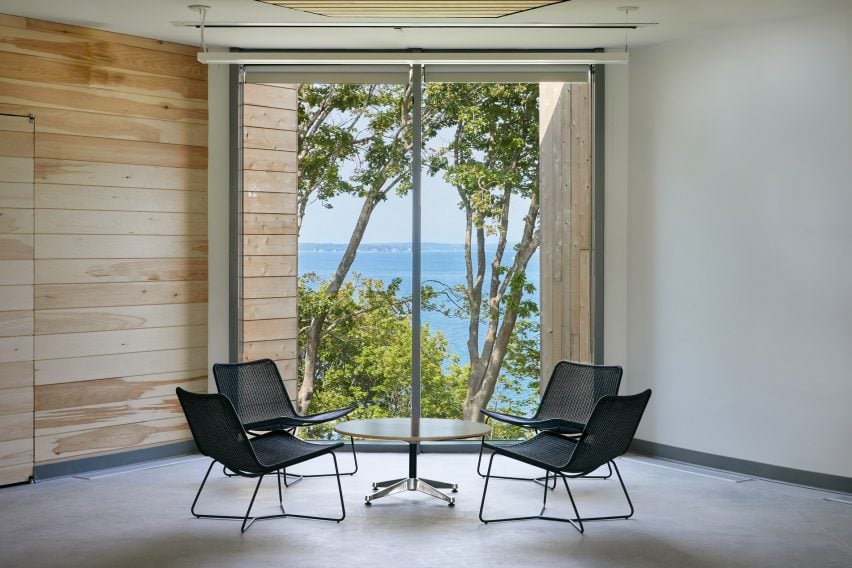
In plan, the two-storey building takes the shape of a wide V. The structural system is made primarily of wood, and the facades are clad in northern white cedar.
Along the south-facing elevation, extensive glazing brings in sunlight during the cold winter months, while exterior shading devices help lessen solar heat gain in the summer.
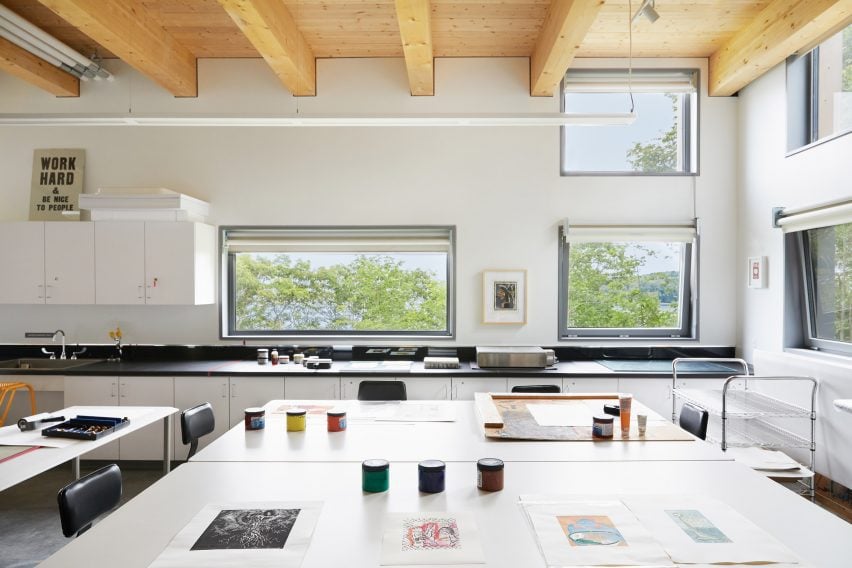
Encompassing 28,050 square feet (2,606 square metres), the building accommodates a range of needs. There are classrooms, laboratories, art studios, offices, and multipurpose rooms, as well as with social areas.
"Generous public spaces, both indoor and outdoor, allow the center to transform from academic building during the day to campus centre after hours – and a venue for public programmes year-round," the team said.
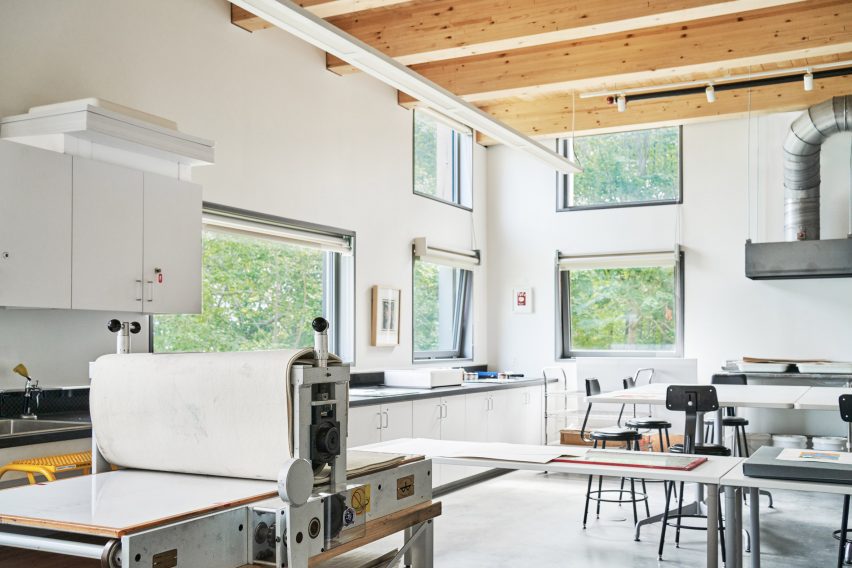
Interior finishes include white walls, concrete flooring and wooden accents. Tall windows offer immersive views of the coastal terrain.
"Every space reinforces a hyperconsciousness of 'being here' with a view of the rugged coastline or campus landscape, from every space," the team said.
In regards to energy efficiency, the building was designed to align with Passivhaus standards – and according to the team, the building consumes 80 per cent less energy than a comparable building.
Strategies include an air-tight building envelope and a high-capacity energy recovery ventilation system. Much of the building's energy needs are met by a 100kW solar array that extends across the roof.
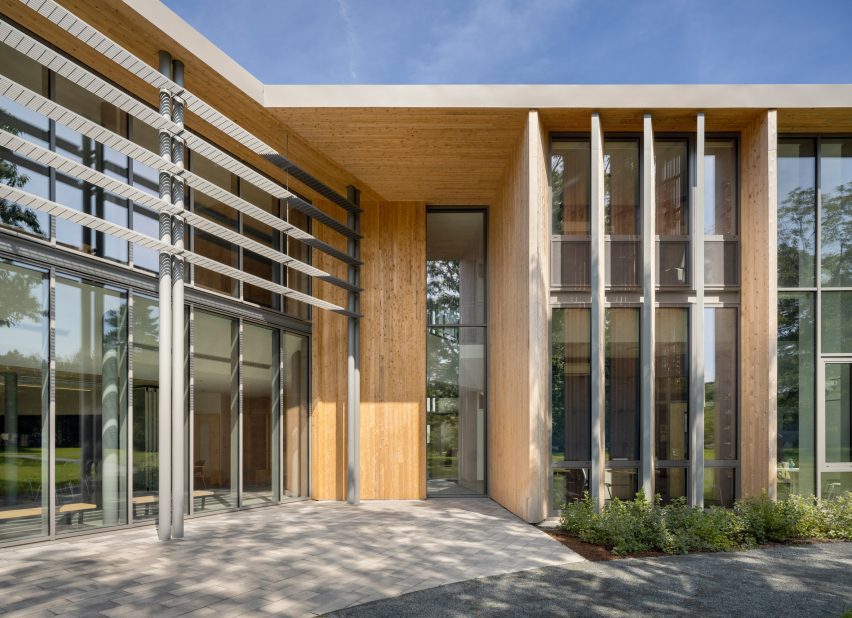
"Combined with a palette of local materials, this ensemble creates a highly sustainable environment that serves as both institutional symbol and a daily learning experience for the campus community," the team said.
In a larger sense, the new centre acts as "a model of holistic sustainability for higher education, setting a new benchmark for academic buildings in northern climates", the team added.
Other recent projects in Maine include a pair of educational facilities at Bowdoin College by HGA that have mass-timber framing, and an open-air theatre by Ervin Architecture that features staggered seating boxes clad in wood.
The photography is by Jameson Lowrey, Jen Holt, Trent Bell, John Gordon, OPAL and Susan T Rodriguez.
Project credits:
Architect: Susan T Rodriguez Architecture & Design
Susan T Rodriguez team: Susan T. Rodriguez (design principal), Joshua Homer (project architect, design), Mikhail Grinwald, Sonia Flamberg, George Switzer, Duncan White, Yang Zhao
Architect of record and building performance design: OPAL
OPAL team: Timothy Lock, (principal-in-charge), Alex Rosenthal (project manager), Gabe Tomasulo, Wilfredo Marrero, Jolie Lau
Structural engineer: SILMAN
MEP engineer: van Zelm Engineers
Civil engineer: Hedefine Engineering and Design
Fire engineer: Fisher Engineering
Landscape architect: Michael Boucher Landscape Architecture
Lighting design: Brandston Partnership Inc
Acoustical design: Harvey Marshall Berling Associates
Cost estimator: Preferred Construction Management Co, Inc
Owner's representative: John Gordon
General contractor: EL Shea